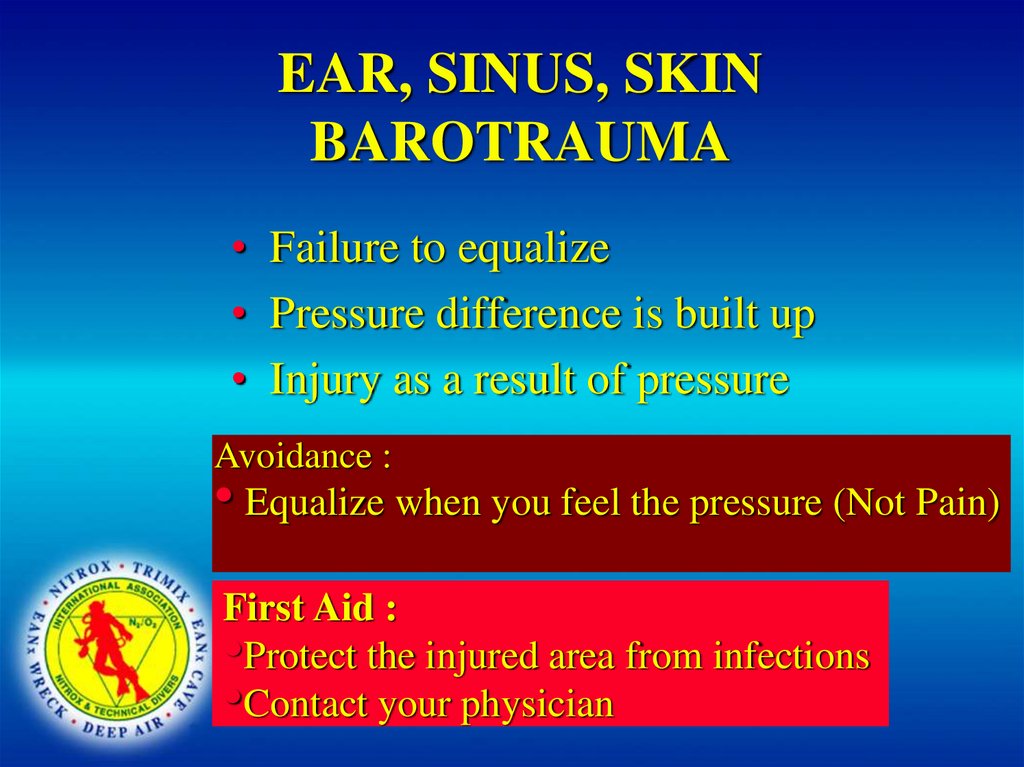

- SINUS BAROTRAUMA HEALING TIME SKIN
- SINUS BAROTRAUMA HEALING TIME PROFESSIONAL
- SINUS BAROTRAUMA HEALING TIME FREE
Positive respiratory tract cultures for Pseudomonas aeruginosa fell from 53.1% at baseline to 22.3% at 12 months (OR 0.03, 95% CI 0.01-0.15), while cultures positive for Methicillin-resistant Staphylococcus aureus (MRSA) similarly dropped from 29.7% to 17.7% (OR 0.06, 95% CI 0.01-0.54).Ĭhristian Merlo, MD, MPH, of Johns Hopkins Medicine in Baltimore, commented that ETI has been a "life changing" treatment for many patients, leading to improved symptoms, lung function, and overall quality of life. Average sweat chloride levels decreased from 93 mEq/L at baseline to 45.2 mEq/L after 1 month of ETI therapy. Body mass index (BMI) increased 9.5% from baseline measurements. In any case, the 64 ETI users in the prospective study had improved lung function, as the percent predicted forced expiratory volume in 1 second (ppFEV 1) rose from 67 at baseline to 86 at 12 months. Immediate treatment can be crucial for a positive outcome.However, despite these improvements, "most participants still had scores for both systems that indicated severe sinus disease," the authors reported in JAMA Otolaryngology–Head & Neck Surgery. In life-threatening situations, such as arterial gas embolism or pneumothorax, divers should seek emergency medical care as soon as possible.

Treatment may include medications, surgical intervention, or hyperbaric oxygen therapy, depending on the severity and type of barotrauma. In cases of significant pain, injury, or persistent symptoms, divers should seek immediate medical attention.
SINUS BAROTRAUMA HEALING TIME PROFESSIONAL
Consultation with a medical professional is still recommended. In the event of barotrauma, divers should seek appropriate treatment based on the severity of their injury: Mild barotraumaįor minor cases of barotrauma, such as mild ear or sinus pain, divers may treat their symptoms with over-the-counter pain relievers and decongestants, as well as rest and hydration. Proper equipmentĮnsuring a well-fitting mask, suit, and regulator can help prevent barotrauma. Equalizationĭivers should equalize pressure in their ears, sinuses, and mask frequently during their dive. Gradual descent and ascentĭivers should descend and ascend slowly, allowing time for pressure equalization and avoiding rapid pressure changes.
SINUS BAROTRAUMA HEALING TIME FREE
Pre-dive assessmentĭivers should assess their physical condition and ensure they are free of any obstructions or illnesses that may impede equalization. Proper scuba diving training, including equalization techniques, is essential to prevent barotrauma. To avoid barotrauma, divers should follow these guidelines: Training Preventing barotrauma is essential for safe and enjoyable scuba diving experiences.
SINUS BAROTRAUMA HEALING TIME SKIN
Occurs when a drysuit or wetsuit is too tight or improperly fitted, causing pressure imbalances and injuries to the skin or underlying tissues. Occurs when a diver fails to equalize the pressure inside their mask, causing the mask to squeeze onto the face and potentially injure delicate facial structures. Results from the expansion of gas trapped in the stomach or intestines, causing pain, bloating, and potential injury to the gastrointestinal tract.

Tooth Barotrauma (Barodontalgia)Ĭaused by pressure imbalances around dental restorations, fillings, or cavities, which can result in tooth pain, fractures, or even dislodged restorations. Pneumothorax:Ī collapsed lung caused by the rupture of lung tissue due to pressure changes, resulting in the leakage of air into the chest cavity. Pulmonary Barotrauma Arterial Gas Embolism (AGE):Ī severe form of pulmonary barotrauma caused by the rapid ascent of a diver without exhaling, leading to lung overexpansion, rupture, and gas bubbles entering the bloodstream.


 0 kommentar(er)
0 kommentar(er)
